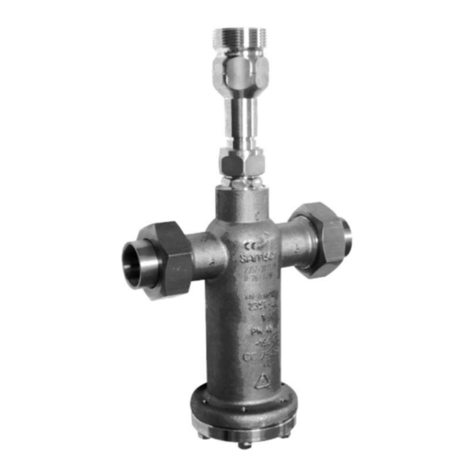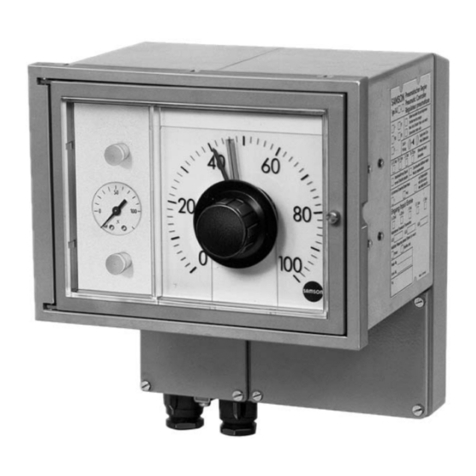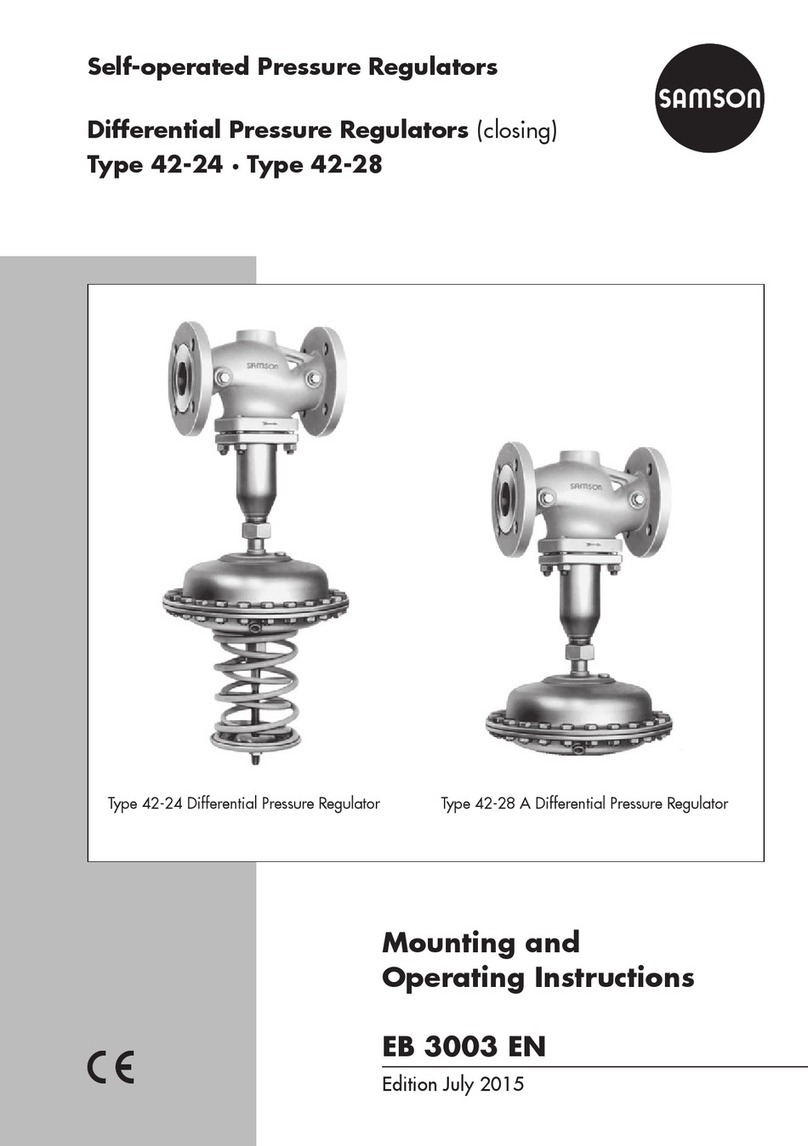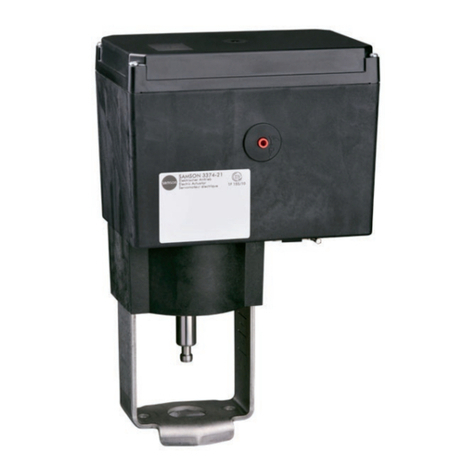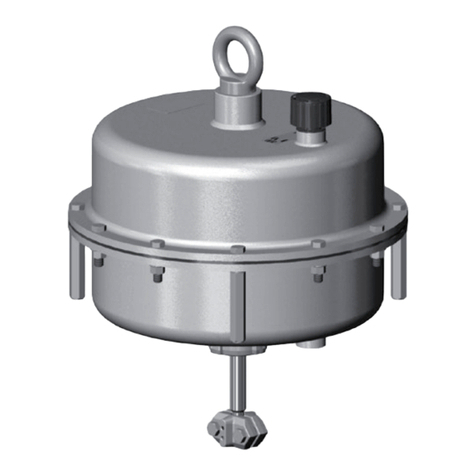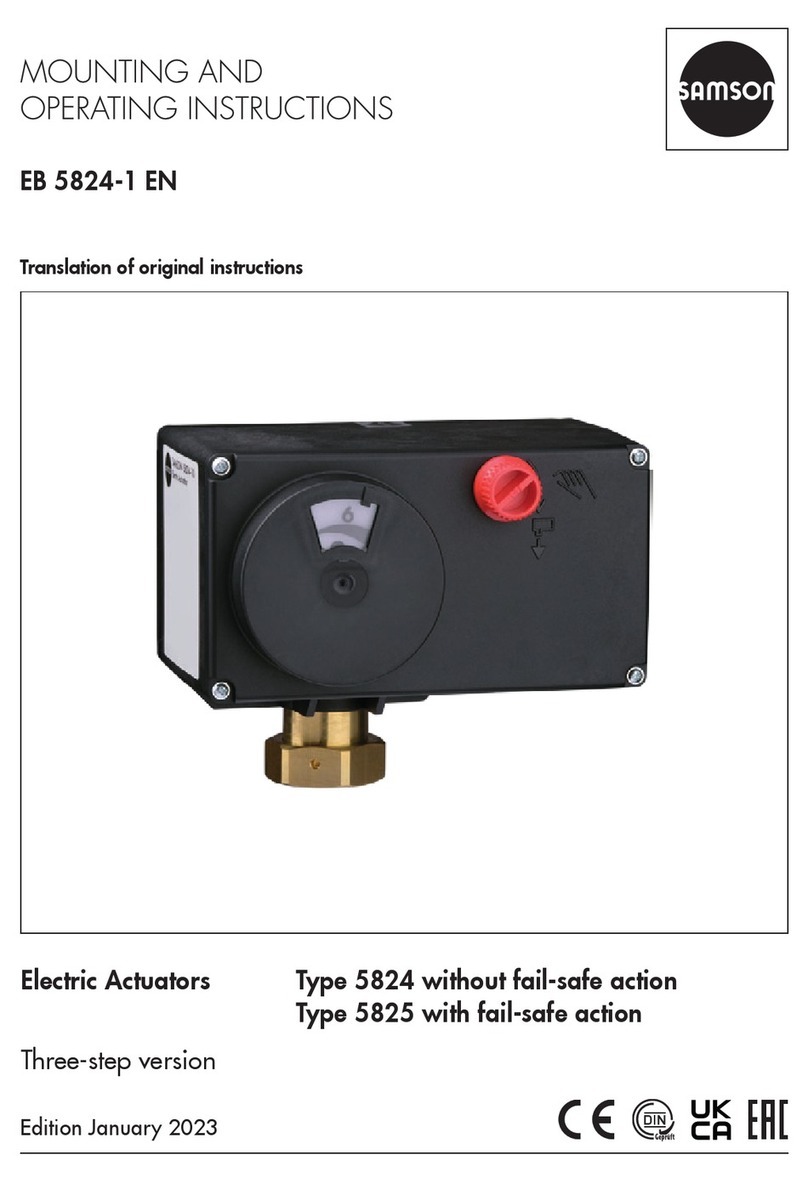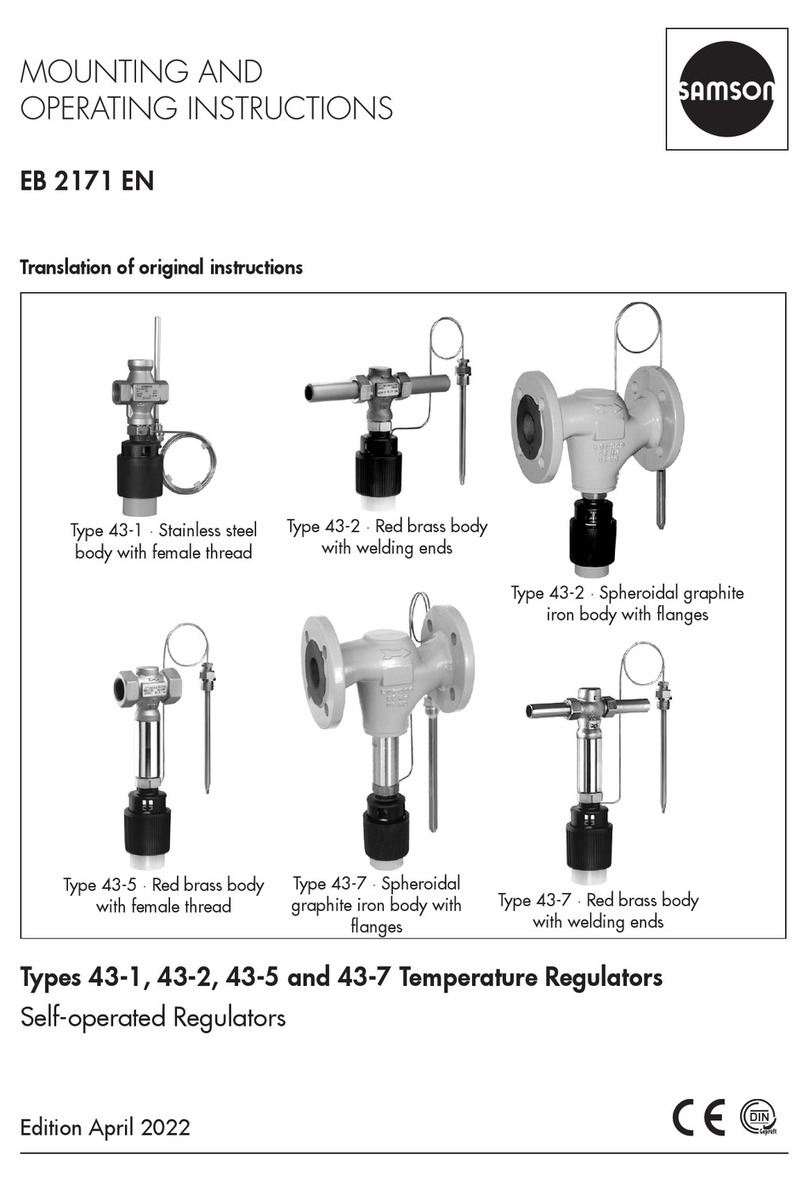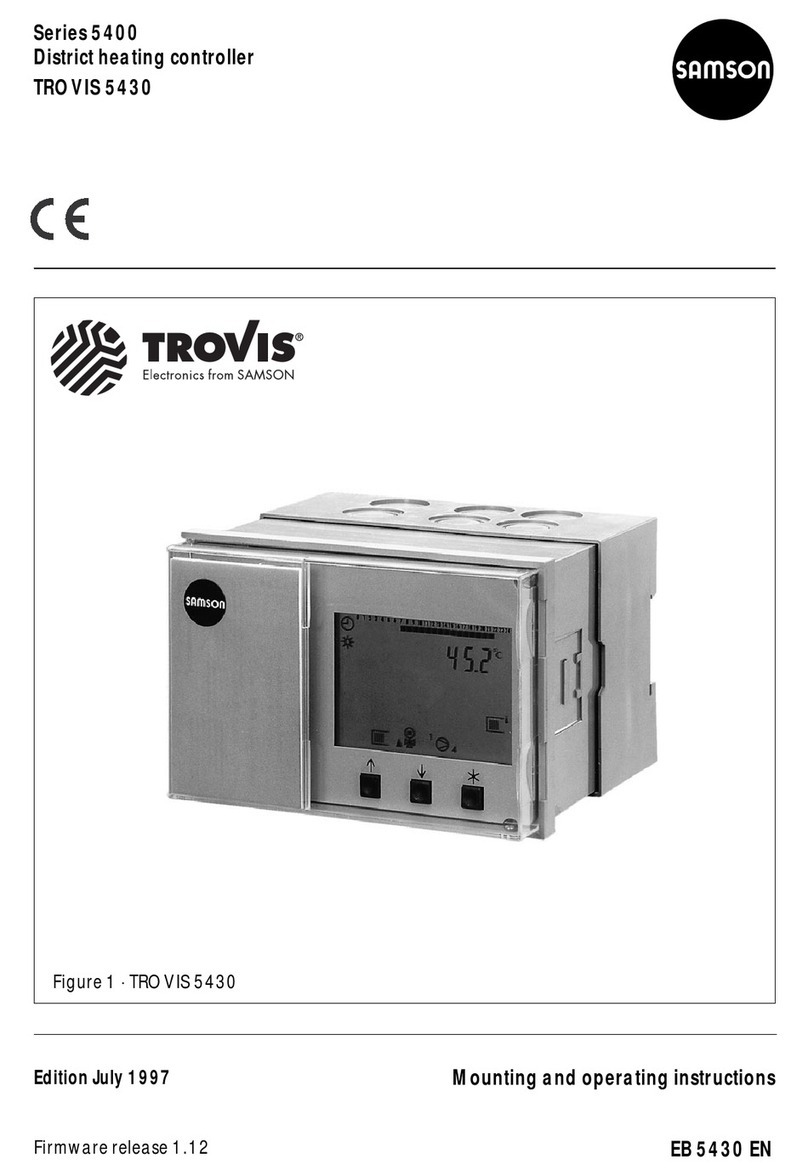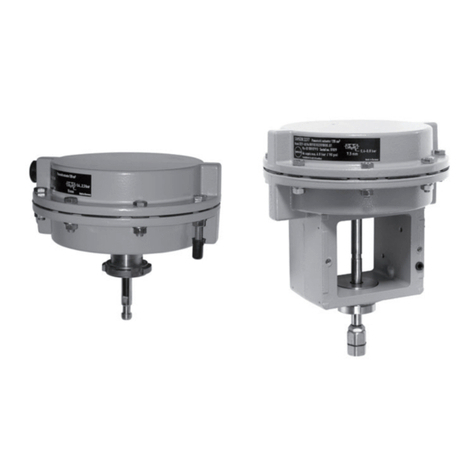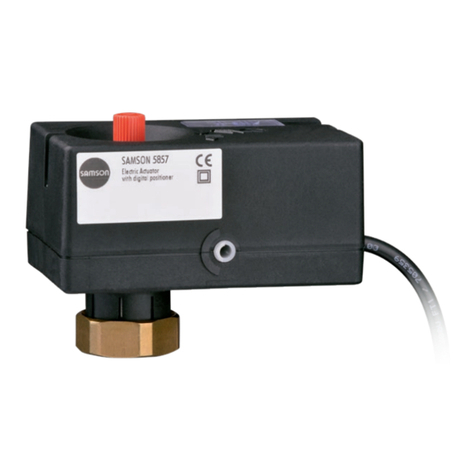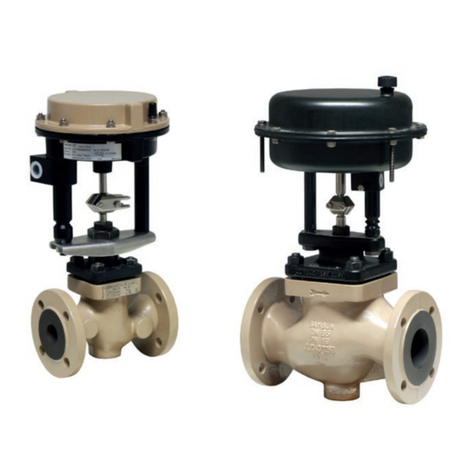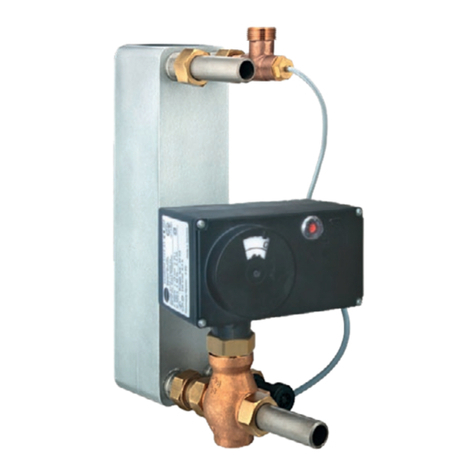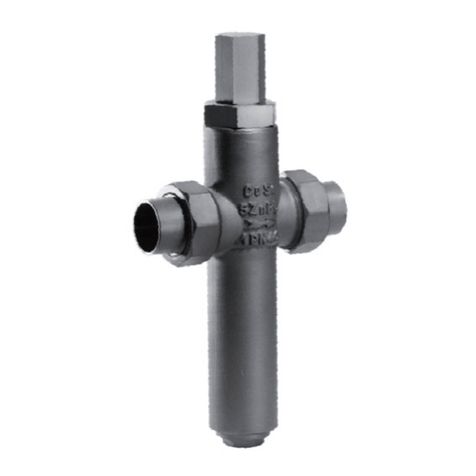
Contents
EB 8310-4 EN
6.2 Travel stop..................................................................................................6-4
6.2.1 Bottom travel stop (minimum travel) ..............................................................6-4
6.2.2 Top travel stop (maximum travel) ..................................................................6-4
6.3 Version with handwheel...............................................................................6-5
6.3.1 Extending the actuator stem manually...........................................................6-5
6.3.2 Retracting the actuator stem manually...........................................................6-5
7 Operation..................................................................................................7-1
7.1 Throttling service.........................................................................................7-1
7.2 On/off service............................................................................................7-1
7.3 Manual mode (versions with handwheel only) ...............................................7-2
7.4 Additional notes concerning operation .........................................................7-2
8 Malfunctions ..............................................................................................8-1
8.1 Troubleshooting ..........................................................................................8-1
8.2 Emergency action .......................................................................................8-2
9 Servicing and conversion............................................................................9-1
9.1 Periodic testing ...........................................................................................9-2
9.2 Preparation for servicing or conversion work.................................................9-2
9.3 Mounting the actuator on the valve after servicing or conversion work ............9-3
9.4 Service work...............................................................................................9-3
9.4.1 Replacing the diaphragm ............................................................................9-3
9.4.2 Replacing the actuator stem seals .................................................................9-5
9.5 Conversion work.........................................................................................9-6
9.5.1 Reversing the direction of action (fail-safe action) ..........................................9-6
9.6 Ordering spare parts and operating supplies ................................................9-9
10 Decommissioning .....................................................................................10-1
11 Removal ..................................................................................................11-1
11.1 Removing the actuator from the valve .........................................................11-2
11.2 Relieving the spring compression in the actuator..........................................11-2
12 Repairs ....................................................................................................12-1
12.1 Returning devices to SAMSON ..................................................................12-1
13 Disposal...................................................................................................13-1
14 Certicates...............................................................................................14-1
15 Annex......................................................................................................15-1
15.1 Tightening torques, lubricants and tools ......................................................15-1
15.2 Spare parts ..............................................................................................15-1
15.3 After-sales service.....................................................................................15-4
15.4 Information on the UK sales region.............................................................15-4
